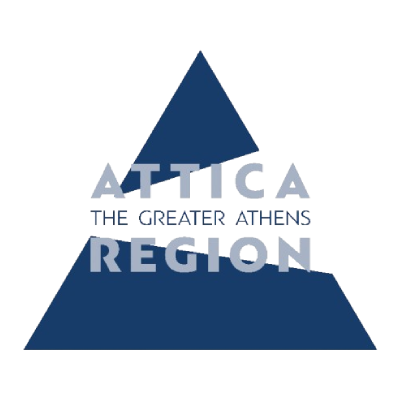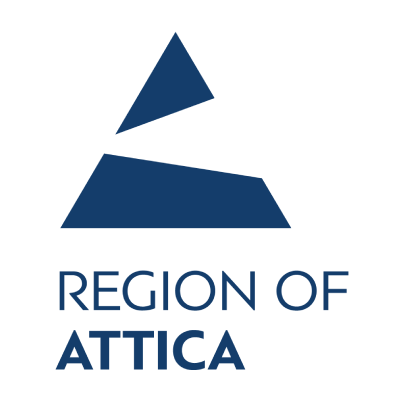Easter. Spring. Countryside. Flavours with symbolisms and ancient-old traditions. In Greece and in Attica, Easter is the greatest holiday of the year, with food playing a starring role. It is deeply connected with culinary traditions that remain vivid and are still practiced today, after all these years.
For Orthodox Christianity, Easter signifies the transition from death to life, and God’s suffering that culminates, followed by the resurrection (and exaltation) of the soul, is depicted on the family table. Families, friends and relatives celebrate the rebirth of nature in the countryside, in the beautiful villages and islands of Attica. Easter in Attica is extraordinary and unique, an experience you should live at least once in your life…
Great Lent and Holy Week fasting
Lent fasting (40 days) begins on Clean Monday and ends on the Friday of the sixth week. It is followed by Lazarus Saturday and Palm Sunday and right after that, the Holy Week begins. For the faithful throughout Attica, it is a period of preparation for the Crucifiction and Resurrection of Christ, during which they abstain from certain food, such as meat, fish, dairy products, olive oil and wine. Nowadays, fasting is only practiced during the Holy Week, and it is based on a vegetable, legume and seafood diet.
On Palm Sunday, people traditionally eat fish, and it is allowed to consume olive oil and wine, right before the Holy Week begins.
Already from Holy Monday and Holy Tuesday, preparations for Easter begin. Houses and house yards are cleaned and everything is shiny and bright, ready to welcome the Christ’s Resurrection. The flavours and recipes that dominate the family table these days are pies (such as spinach pie), legumes with or without rice, seafood (squid, octopus, cuttlefish, shrimps), “ladera” (vegetable dishes cooked in olive oil) such as “briam” (ratatouille baked in the oven), “gemista” (stuffed and baked vegetables), green beens and artichokes, as well as olives, taramosalata and fresh salads.
The evening of Spy Wednesday, after the church service, women in Attica begin preparations for the “tsoureki”, the traditional sweet Easter bread, starting with the dough. On Maundy Thursday, they knead the dough and bake the trourekia, shaping them into braids and decorating them with a bright red egg on top, as well as the traditional Easter cookies. Then it’s time for the eggs, which are boiled and then dyed red, either using special egg dye or the juice of boiled red onion skins, beetroots and poppy flowers.
Good Friday is the day of absolute grief for all Christianity, a day of abstinence from work and food. In the afternoon, after the Deposition of Christ, women and young girls decorate the Epitaph with spring flowers and make wreaths and garlands. The whole day, church bells ring mournfully throughout Attica, and the family table traditionally comprises boiled lentil or bean soup with vinegar, tomato soup, and boiled or raw vegetables, everything without oil. The evening of the same day, the matins of Holy Saturday is recited in churches, followed by the Epitaph procession within the parish, which takes place in great piety. During the procession, the faithful follow the Epitaph with lit candles in their hands, while it is customary for men, women and children to bow down and pass under it, in order to “receive the grace of Christ”, at the same time indicating obedience to the Lord. In Hydra’s Kamini district, the Epitaph and the whole procession end up at the seafront. Then, the people who hold the Epitaph walk into the water, supporting in in a way that its legs touch the sea, so that it is blessed and sanctified.
Holy Saturday is dedicated to preparations for the day that follows. After the Resurrection celebration at midnight, families sit at the table and start with the “tsougrisma”, the red egg tapping. Then is time for the first meat dish after Great Lent and Holy Week fasting: the traditional mageiritsa.
The day of “Lambri” (Easter) has arrived, and everything is ready for the great feast and celebrations that traditionally take place all over Attica! On Easter Sunday, a whole lamb on a spit starts roasting at the house yard, very early in the morning. It takes hours, so in the meantime, the first “mezedes”, little dishes with starters, and the first glasses of wine appear on the table. The food marathon has begun, featuring a number of delicious flavours, such as cheeses, tzatziki, lettuce salad with scallions and dill, Greek salad with feta cheese, potatoes baked in the oven, cheese pie, as well as the typical dishes of the day, kokoretsi and kontosouvli. The egg-tapping game is on, and whoever manages to break the other eggs without breaking their own is the winner, having good fortune for the rest of the year. Then comes the sweet aftertaste from the tsoureki (Easter bread), with its stringy texture and beautiful aromas, and the Easter cookies.
Flavours with symbolisms…
Red eggs
Without a doubt, they are the “trademark” of Easter table. Traditionally dyed red – variations with bright colours and decorations are also quite common – eggs symbolise life and creation. They are always dyed on Maundy Thursday, the day of the Last Supper. The red colour symbolises the blood of Christ on the cross, as well as the rebirth of the world and the joy of Resurrection, since the egg is symbolically linked with the tomb of Jesus, which was found empty. With the tapping of the egg, its shell cracks and a new life is born, just like the tomb stone cracked at Resurrection.
Lamb and kokoretsi
Lamb, kid and kokoretsi are the stars of the Easter meal, and, interestingly enough, the way they are prepared is traced back to ancient Greece. When ancient Greeks roasted meat on the spit, they dipped a pine twig into a juice of unripe grapes and plums, with which they basted the meat, giving it an aromatic flavour of fruit and resin. Nowadays, the meat is basted with olive oil and lemon juice. To prepare the kokoretsi (goat’s organs and offals in a long skewer, wrapped with intestines), ancient Greeks used to marinade the intestines in vinegar, water and honey. The vinegar acted as antiseptic and dehydrated the intestines, ridding them of the extra fat, while the honey created a caramelised coating.
The lamb symbolises the sacrifice of Jesus, who as a “Lamb of God” took on the sins of the world. The Easter Sunday tradition of lamb roasting on a spit originates from the Jewish Passover and is associated with the Jews’ exodus from Egypt.
Tsoureki (Easter bread)
An indispensable part of Christian traditions, bread symbolises the Body of Christ, and the troureki is probably the most popular festive variation of bread. It is also known as “kouloura tis Lambris” and is associated with the Resurrection of Christ and eternal life. It is made in various shapes, the most popular being the braid, and has the distinctive flavour and aroma of mastic and/or mahlab. A red egg is usually placed in the centre of the tsoureki-Easter bread.
Mageiritsa
It is the soup that Greeks traditionally eat on Holy Saturday after the Resurrection, and contains the offal of the lamb that will be consumed the following day, lettuce, various herbs such as dill, and rice. It is essentially a light and easily digestable dish that smoothly rehabilitates the stomach after 40 days of fasting and prepares it for the consumption of meat that follows. Its symbolism, however, lies in the herbs that are associated with the bitter herbs Jews used to eat, in memory of their slavery in Egypt.
Lentils
This is the typical dish of Good Friday, mournful like the day itself. The whole, 40 day fasting period may be rarely followed nowadays, however on Good Friday almost everyone chooses to fast, even abstaining from oil. The food that is traditionally consumed this day is boiled in water and seasoned with plenty of vinegar, the thin lentil soup being the most popular dish. Vinegar is added in memory of the vinegar that was given to Christ on the cross, instead of water. The lentils, according to tradition, symbolise the tears of the Mother of Jesus.


